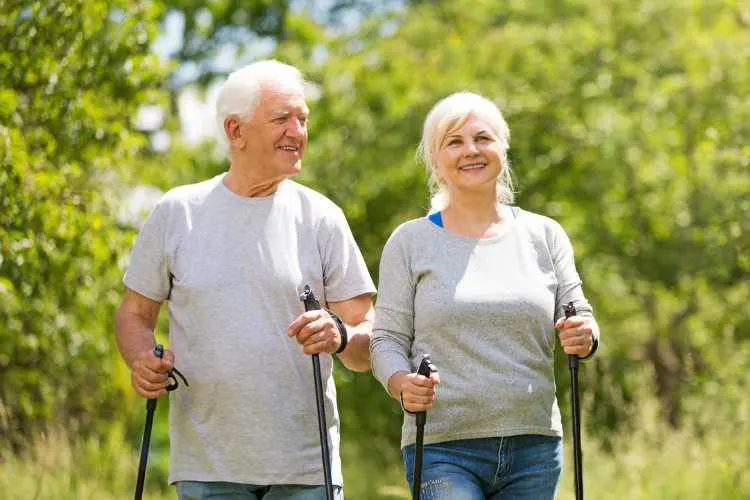

RELATIONSHIP HEALTH ARTICLES

Balancing Act: Tips and Tricks for Fall Prevention and Wellness
Pets. Pickleball. Puddles. These are the top offenders that are causing St. George residents to experience ground-level falls and sending them to the emergency room. What is the solution? Send the pets away, bulldoze the courts, and cancel all weather? Wrong! There are many other solutions and resources to keep you living safely and for as long as possible.
We've all taken a fall. Falls are the number-one traumatic injury that brings people into the emergency room at Intermountain Health St. George Regional Hospital. How can a trip to the emergency room or a long hospital visit be prevented? It begins with you. You can save yourself from that first fall or prevent repeat falls by being realistic about what puts you at risk.
A great way to assess your level of risk is to answer the following questions:
Have you ever frightened yourself by almost falling?
Do you have any trouble getting up and out of a chair?
Do you experience regular dizziness or weakness?
Have you changed your daily activities because they have become too difficult or frightening?
Does diminishing strength have you missing out on enjoyable activities?
Has your home started to feel like a dangerous obstacle course?
Do you stay home because the world has become too hazardous to navigate?
If any of these questions apply to you or someone you know, read on. We have some tools to help.
Falls are notoriously common among older adults. As we age, our muscles weaken, our balance falters, and our reflexes slow. But it's not just older adults who are at risk. People with mobility impairments, those on medications that can affect balance or blood pressure, individuals with vision impairments, and those with cognitive issues like dementia are all at heightened risk. Recognizing if you are in one of these vulnerable groups is the first step in prevention.
Often, our environment can play a subtle yet significant role in falls. Hazards like loose rugs, wet floors, uneven pavements, poor lighting, and cluttered spaces can be treacherous. Environmental risks, however, are among the most controllable. Simple home modifications, like installing bathroom grab bars, improving lighting, and securing carpets, can significantly reduce the risk of a fall.
Medications can be double-edged swords; they are vital for health but can sometimes increase the risk of injury. Sedatives, antidepressants, and even some over-the-counter medications can put you at risk for a fall. Regular medication reviews with healthcare providers are essential, especially when new medications are introduced.
Maintaining physical health is a cornerstone of fall prevention. Participating in regular exercise that focuses on activities designed to enhance balance, strength, and flexibility, like Tai Chi, yoga, or simple walking, can drastically reduce fall risks. Tailored exercise programs under professional supervision are beneficial for those with mobility issues.
Adequate nutrition and hydration are vital in maintaining muscle strength and overall health, reducing fall risks. A diet rich in calcium and vitamin D is essential for bone health and mitigating the impact of falls.
Regular eye exams ensure that vision impairments are detected and corrected, reducing the risk of falls caused by poor vision. Similarly, appropriate footwear is also important. Shoes should provide good support and have non-slip soles.
Awareness and education are powerful tools. Understanding your risks and taking action to prevent falls will help you feel safer while navigating your daily activities. Being in the know is especially true for caregivers and family members of those at risk. Community programs and resources can provide valuable information and support.
Despite all precautions, falls may still occur, but that shouldn't make them an acceptable part of aging. With correct information, precautions, and lifestyle adjustments, the risk of a fall can be significantly reduced. It's about creating a safer environment, maintaining physical health, and being aware of hazards. Make an appointment with your primary care provider today, and start the conversation about continued fall prevention. Your independence and safety are worth every effort. It's never too late.

